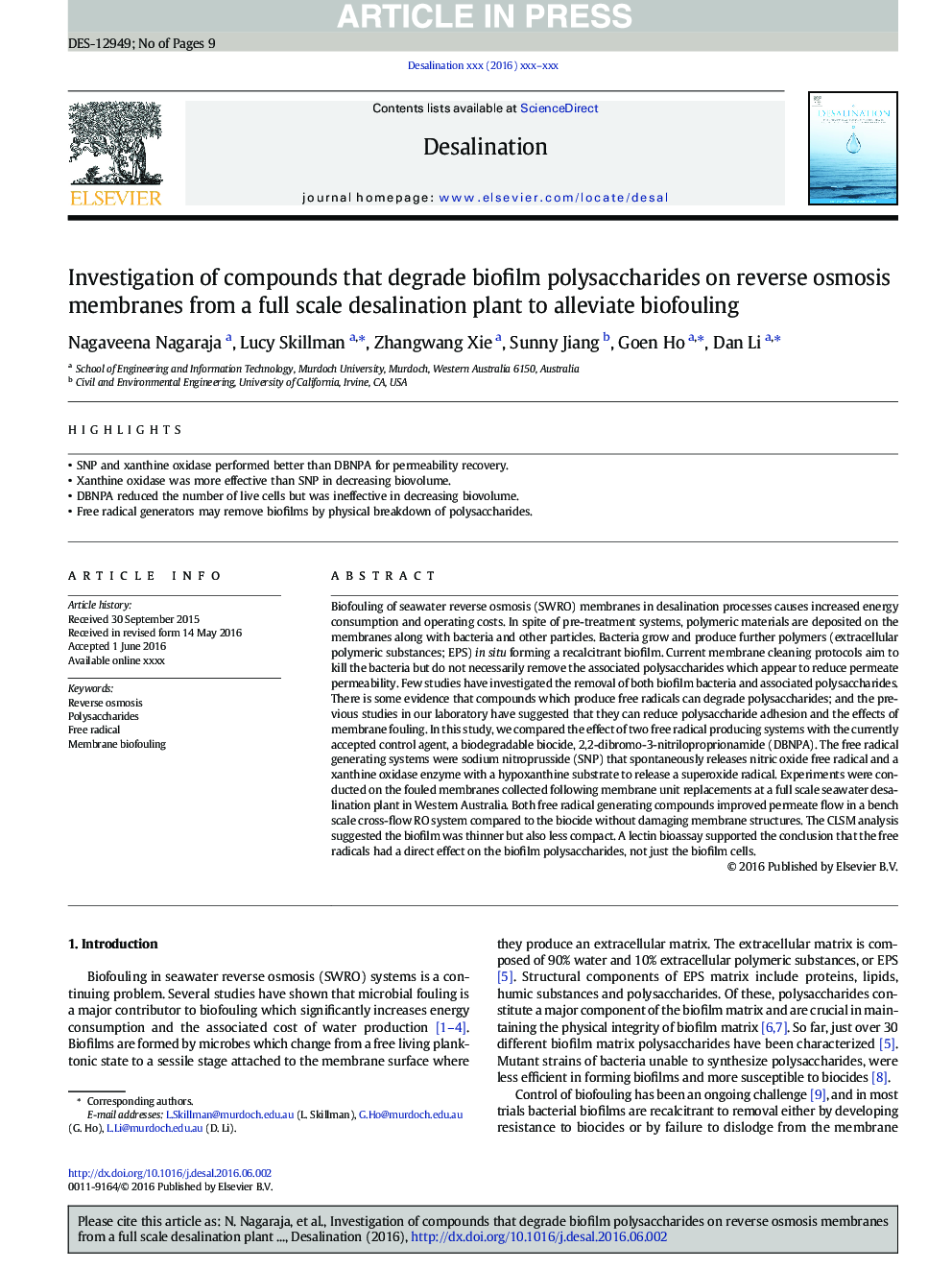| کد مقاله | کد نشریه | سال انتشار | مقاله انگلیسی | نسخه تمام متن |
|---|---|---|---|---|
| 4987934 | 1455292 | 2017 | 9 صفحه PDF | دانلود رایگان |
عنوان انگلیسی مقاله ISI
Investigation of compounds that degrade biofilm polysaccharides on reverse osmosis membranes from a full scale desalination plant to alleviate biofouling
ترجمه فارسی عنوان
بررسی ترکیباتی که پلی ساکارید های بیوفیلم را در غشاهای اسمز معکوس از یک گیاه خنک کننده کامل به منظور کاهش آسیب زیستی کاهش می دهند
دانلود مقاله + سفارش ترجمه
دانلود مقاله ISI انگلیسی
رایگان برای ایرانیان
کلمات کلیدی
اسمز معکوس، پلی ساکارید، رادیکال آزاد، بیوفیلم غشایی،
موضوعات مرتبط
مهندسی و علوم پایه
مهندسی شیمی
تصفیه و جداسازی
چکیده انگلیسی
Biofouling of seawater reverse osmosis (SWRO) membranes in desalination processes causes increased energy consumption and operating costs. In spite of pre-treatment systems, polymeric materials are deposited on the membranes along with bacteria and other particles. Bacteria grow and produce further polymers (extracellular polymeric substances; EPS) in situ forming a recalcitrant biofilm. Current membrane cleaning protocols aim to kill the bacteria but do not necessarily remove the associated polysaccharides which appear to reduce permeate permeability. Few studies have investigated the removal of both biofilm bacteria and associated polysaccharides. There is some evidence that compounds which produce free radicals can degrade polysaccharides; and the previous studies in our laboratory have suggested that they can reduce polysaccharide adhesion and the effects of membrane fouling. In this study, we compared the effect of two free radical producing systems with the currently accepted control agent, a biodegradable biocide, 2,2-dibromo-3-nitriloproprionamide (DBNPA). The free radical generating systems were sodium nitroprusside (SNP) that spontaneously releases nitric oxide free radical and a xanthine oxidase enzyme with a hypoxanthine substrate to release a superoxide radical. Experiments were conducted on the fouled membranes collected following membrane unit replacements at a full scale seawater desalination plant in Western Australia. Both free radical generating compounds improved permeate flow in a bench scale cross-flow RO system compared to the biocide without damaging membrane structures. The CLSM analysis suggested the biofilm was thinner but also less compact. A lectin bioassay supported the conclusion that the free radicals had a direct effect on the biofilm polysaccharides, not just the biofilm cells.
ناشر
Database: Elsevier - ScienceDirect (ساینس دایرکت)
Journal: Desalination - Volume 403, 1 February 2017, Pages 88-96
Journal: Desalination - Volume 403, 1 February 2017, Pages 88-96
نویسندگان
Nagaveena Nagaraja, Lucy Skillman, Zhangwang Xie, Sunny Jiang, Goen Ho, Dan Li,
